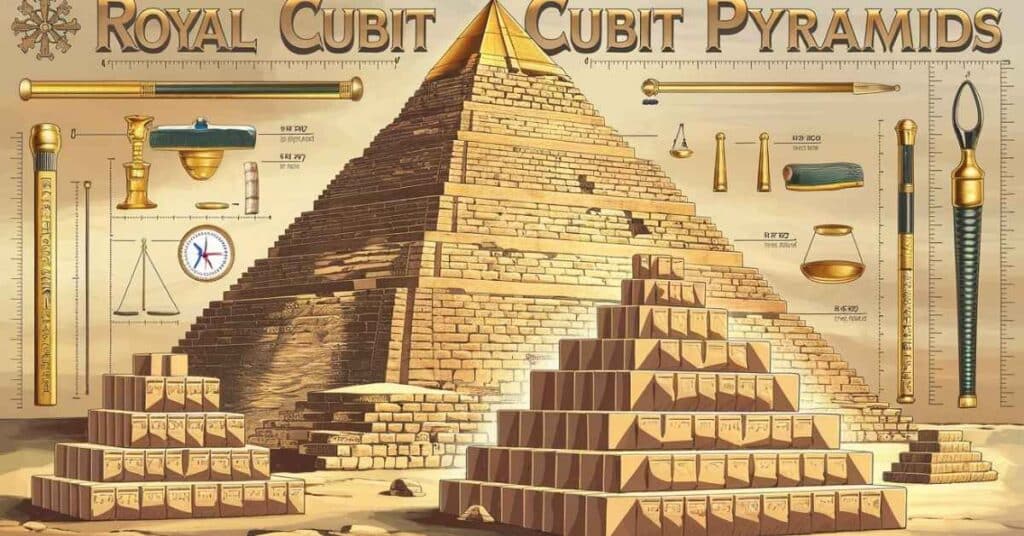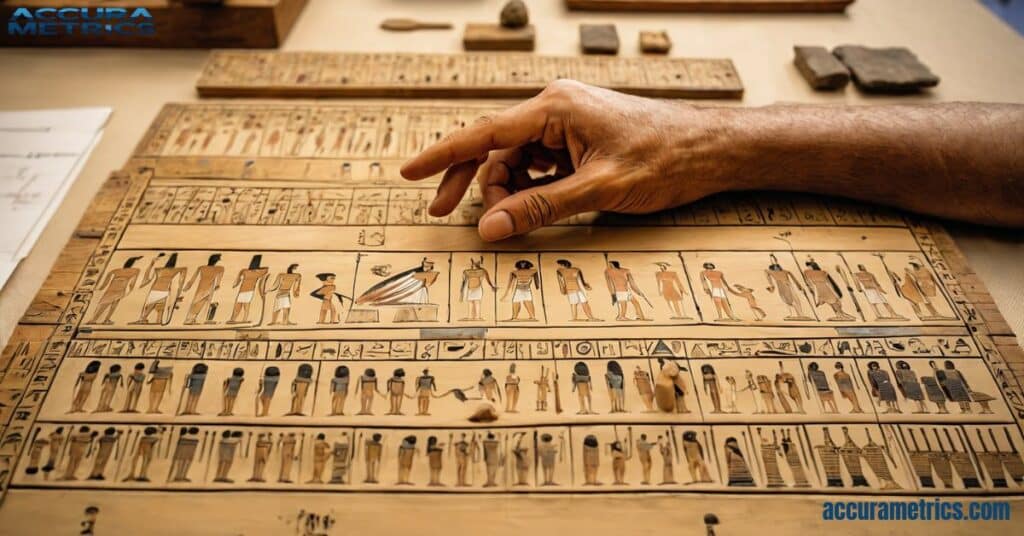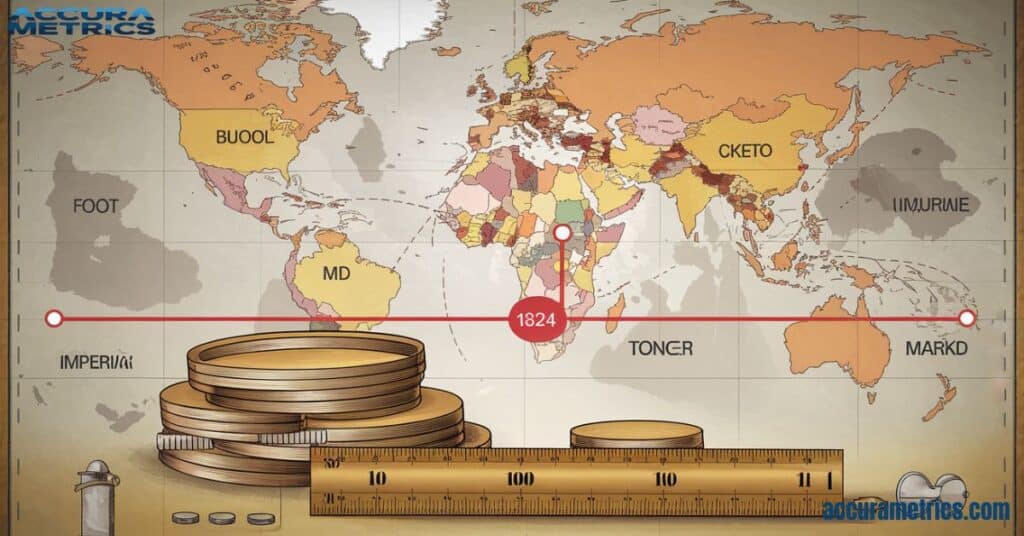Humans have long sought to quantify the world around them. From ancient civilizations to the digital age, the history of length measurements reflects innovation, necessity, and cultural evolution. In this exploration, we will delve into the fascinating development of length measurements from ancient times to today.
Early Measurement Systems
Standardizing Measurements
The story of length measurement begins in the cradle of civilization: Mesopotamia. Here, the Sumerians laid the groundwork for what would become a global quest for standardization.Measurement is the first step that leads to control and eventually to improvement.
“You can’t measure something, you can’t understand it. Can’t understand it, can’t control it. You can’t control it, you can’t improve it.” – H. James Harrington
The Sumerian measuring rod, known as the Nipper, dates back to 2650 BC. This 20 inch rod marked a significant milestone in the history of measurements. But it was the Gudea Rod, discovered in the Lagash area around 2150 BC, that truly showcased the sophistication of ancient measurement systems.
| Artifact | Date | Material | Significance |
|---|---|---|---|
| Nipper Measuring Rod | 2650 BC | Unknown | Earliest known standardized measure |
| Gudea Rod | 2150 BC | Marble | Subdivided sections for precise measurement |
Egyptian Precision

The ancient Egyptians took measurement to new heights with their royal cubit. This unit, based on the length from the Pharaoh’s elbow to the tip of his middle finger, became the standard for construction and commerce.
- The royal cubit was divided into 7 palms or 28 digits
- It measured approximately 52.3 cm (20.6 inches)
- Used in the construction of the pyramids and other monumental structures
The Nilometer, a structure used to measure the Nile’s water levels, further demonstrated the Egyptians’ mastery of measurement. This tool was crucial for predicting harvests and calculating taxes.
The Greeks and Romans built upon earlier ancient measurement systems, developing a more standardized approach that would influence European measurements for centuries to come.
Roman length measurements included:
- Digitus (finger): 18.5 mm
- Palmus (palm): 74 mm
- Pes (foot): 296 mm
- Passus (pace): 1.48 m
- Mille Passuum (mile): 1,480 m
The Human Touch

One of the most intuitive and universally adopted methods of measurement was using the human body as a reference. This approach, while variable, provided a readily available and relatable system of measurement.
The Versatile Cubit
The cubit measurement, spanning from the elbow to the fingertip, was widely used across cultures. Its length varied, leading to different standards:
- Sumerian cubit: 518.6 mm
- Egyptian royal cubit: 523.5 mm
- Greek cubit: 462.4 mm
- Roman cubit: 444.5 mm
Hands, Feet, and Thumbs
Body part measurements became a common language across civilizations:
- The foot, used by Persians, Romans, and many others, varied but typically ranged from 250 to 335 mm
- The hand, standardized by King Henry VIII at 4 inches, is still used in horse measurement today
- The inch, derived from the width of a thumb, was defined by King David I of Scotland as the width of three thumbs
Learn about length measurements “10 Everyday Items That Are 3 Feet Long”
Nature’s Rulers

Our ancestors also turned to nature for consistent measures, using seeds and grains as references.
The Humble Barleycorn
The barleycorn measurement played a crucial role in defining the inch:
- 3 barleycorns laid end to end equaled 1 inch
- This definition was established by King Edward II of England in the 14th century
Poppyseeds and Beyond
Other plant based measurements included:
- 12 poppyseeds equaling 1 inch
- Rice grains used in some Asian cultures
- Carob seeds used in the Middle East for weighing precious metals
Middle Ages Measurements

The fall of the Roman Empire led to a fragmentation of measurement systems across Europe. Each feudal lord, city state, and guild often had its own standards, creating a chaotic landscape for trade and commerce.
Religious Influences
The Church played a significant role in maintaining some consistency in measurements:
- Monastic orders kept records of various units
- Religious texts often referenced biblical measurements, providing a common language
Trade Challenges
The diversity of measurements posed significant challenges for merchants:
- Conversion tables became essential tools for traders
- Local markets often had their own set of weights and measures
- This complexity sometimes led to disputes and fraud
Renaissance & Enlightenment Measurements

As global trade expanded and scientific inquiry flourished, the need for standardized measurements became increasingly apparent.
Advancements in Surveying
The Renaissance saw significant advancements in measurement, particularly in land surveying:
- Introduction of the surveyor’s chain by Edmund Gunter in 1620
- Development of more precise instruments like the theodolite
- Use of triangulation for mapping large areas
Royal Decrees and Scientific Endeavors
Monarchs and scientists alike recognized the importance of standardization:
- Elizabeth I of England attempted to unify weights and measures in 1588
- The French Academy of Weights and Measures began work on a universal system in the late 18th century
Stay connected with us “10 Common Things That Are 400 Feet long”
The Metric Revolution

The French Revolution sparked a radical change in measurement systems, leading to the creation of the metric system.
Birth of the Meter
The meter was defined as one ten millionth of the distance from the North Pole to the Equator:
- Initial calculations were based on surveys of the Earth’s meridian
- A platinum bar was created as the standard meter in 1799
Global Adoption and Resistance
The metric system slowly gained traction globally:
- France mandated its use in 1799
- Many countries adopted it throughout the 19th and 20th centuries
- The United States remains one of the few countries not fully converted to the metric system
The Imperial Measurements System

While much of the world embraced the metric system, the British Empire developed its own standardized system.
Formation and Standardization
The Imperial system, formalized in 1824, built upon traditional English units:
- Incorporated many pre existing measures like the foot, yard, and mile
- Standardized weights and volumes across the empire
Global Influence
The Imperial system spread throughout the British Empire:
- Adopted by colonies and territories worldwide
- Still used in some former colonies, including the United States
Modern Precision: The SI Units

The 20th century saw the development of the most precise measurement system to date: the International System of Units (SI).
Read More 18 Everyday Items That Are 5 Meters Long/Big
Atomic Standards
Modern length measurements are based on atomic principles:
- The meter is defined by the speed of light in a vacuum
- Atomic clocks provide unprecedented accuracy in time measurement, which is crucial for defining length
Nanotechnology and Quantum Measurement
As we push the boundaries of science, new challenges in measurement arise:
- Nanotechnology requires measurements at the atomic scale
- Quantum effects introduce new complexities in precise measurement
Digital Age & Future of Length Measurements

Technology continues to revolutionize how we measure and understand length.
Laser Measurements and Interferometry Techniques
Modern surveying and manufacturing rely on incredibly precise measurements:
- Laser rangefinders can measure distances with millimeter accuracy over kilometers
- Interferometers can detect changes in length smaller than the diameter of an atom
Potential Extraterrestrial Standards
As we look to the stars, new standards may emerge:
- Proposals for using pulsars as interstellar distance markers
- Consideration of relativistic effects on measurement in space exploration
Cultural Impact of Traditional Measurements

Despite the push for standardization, many traditional measurements persist in specific industries and cultures.
Industry Specific Measurements
Some fields maintain their own unique measurement systems:
- The hand is still used in equestrian circles
- Points and picas remain standard in typography
- Nautical miles are used in maritime and aviation industries
Psychological Aspects of Familiar Systems
People often have an emotional attachment to familiar measurement systems:
- Resistance to metric conversion in countries like the US and UK
- Continued use of traditional recipes and cooking measurements
Join us for more insights “10 Common Things That Are 15 Centimeters Long”
FAQ: Length Measurements Through History
Q: What was the first standardized unit of length measurement?
A: The earliest known standardized unit was the Sumerian cubit, dating back to around 2700 BC. It was based on the length of a forearm and was used in ancient Mesopotamia.
Q: Why did people use body parts for measurements?
A: Body parts were readily available and provided a relatable reference point. Measurements like the foot, hand, and cubit were easy to use without special tools, making them practical for everyday tasks.
Q: When was the metric system invented?
A: The metric system was developed during the French Revolution in the 1790s. It was officially introduced in France in 1799, aiming to create a universal, decimalized standard of measurement.
Q: Why do some countries still use the Imperial system?
A: Countries like the United States maintain the Imperial system due to the high costs of conversion, cultural familiarity, and the extensive use of Imperial units in existing infrastructure and industries.
Q: How accurate are modern length measurements?
A: Modern length measurements are incredibly precise. The current definition of a meter is based on the speed of light in a vacuum, allowing for accuracy to within a fraction of a wavelength of light – far more precise than any physical object could provide.
Conclusion: The Ongoing Quest for Precision
The history of measurement length is a testament to human ingenuity and our constant drive for precision. From the ancient measurement systems of Mesopotamia and Egypt to the atomic standards of today, we’ve come a long way in our ability to quantify the world around us.
As we face new frontiers in science and technology, the challenges of measurement continue to evolve. The quest for ever greater accuracy drives innovation in fields ranging from nanotechnology to space exploration.
Understanding this rich history not only gives us appreciation for the tools we use today but also provides insight into the cultural and scientific developments that have shaped our world. As we move forward, the story of measurement will undoubtedly continue to unfold, reflecting our expanding knowledge and our enduring need to make sense of the universe around us.
Quiz: The History of Length Measurements
- What ancient civilization is credited with creating one of the earliest standardized measuring rods, known as the “Nipper”?
- a) Egypt
- b) Mesopotamia
- c) Greece
- d) Rome
Answer: b) Mesopotamia
- The ancient Egyptian “royal cubit” was based on which part of the body?
- a) The foot
- b) The hand
- c) The elbow to the tip of the middle finger
- d) The thumb
Answer: c) The elbow to the tip of the middle finger
- Which system of measurement was developed during the French Revolution and is based on decimal units?
- a) Imperial system
- b) Metric system
- c) Customary system
- d) Ancient system
Answer: b) Metric system
- What was the barleycorn used to define in historical measurement systems?
- a) A foot
- b) A yard
- c) An inch
- d) A meter
Answer: c) An inch
- Modern length measurement is based on which constant of nature?
- a) The speed of sound
- b) The speed of light
- c) The gravitational constant
d) The Planck constant
Answer: b) The speed of light
Don’t miss out on our latest posts “10 Common Things That Are 3 Inches Long”

My name is Linda, and I am an experienced blogger with a passion for precision and craftsmanship. With years of expertise, I contribute to Accura Matrics, bringing a wealth of knowledge and a keen eye for detail. My insightful articles and expert tips are designed to help readers achieve excellence in their measurements and dimensions projects, offering valuable guidance in the pursuit of accurate and thoughtful design.

